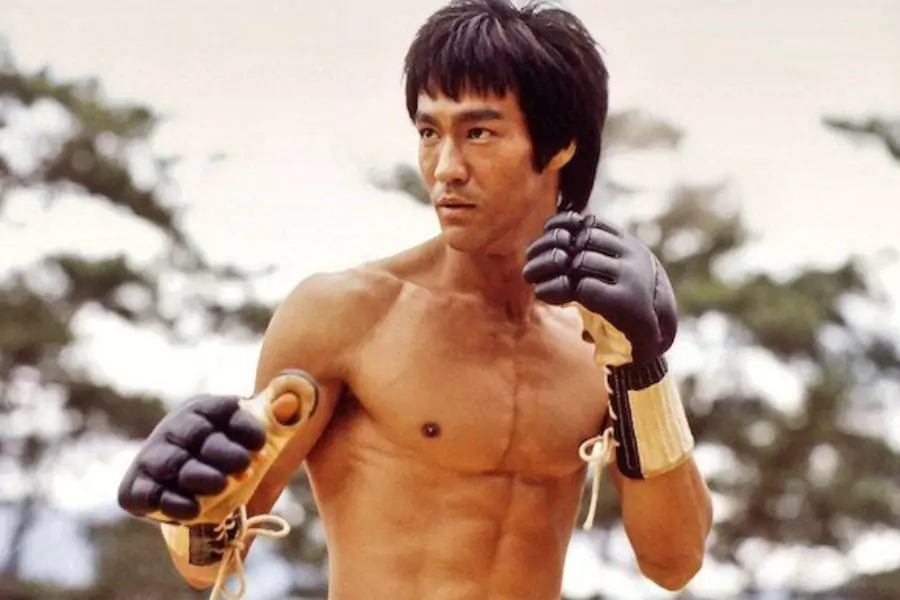
Marketing channels are the pathways through which businesses promote and sell their products or services to their target audience. Understanding and utilizing these channels effectively is crucial for any business looking to maximize its reach, engagement, and conversions. In this article, we will explore various marketing channels, with a particular focus on LinkedIn Advertising, TikTok Advertising, Google Advertising, Bing Advertising, and Twitter Advertising. Each of these platforms offers unique opportunities and benefits, making them essential components of a comprehensive marketing strategy.
What Are Marketing Channels?
Marketing channels refer to the mediums or pathways that companies use to communicate with their target audience, promote their products or services, and drive sales. These channels can be online or offline, direct or indirect. Effective use of marketing channels can help businesses reach a wider audience, build brand awareness, and achieve their sales goals. In today’s digital age, online marketing channels have become increasingly important, offering businesses the ability to reach a global audience with targeted and measurable campaigns.
LinkedIn Advertising
LinkedIn Advertising is a powerful tool for businesses looking to reach professionals and decision-makers in various industries. With over 700 million users, LinkedIn provides a unique platform for B2B marketing, allowing businesses to target specific demographics, job titles, industries, and more. LinkedIn’s advertising platform offers various ad formats, including Sponsored Content, Sponsored InMail, and Text Ads, each designed to help businesses achieve their marketing objectives.
Benefits of LinkedIn Advertising
- Targeted Reach: LinkedIn allows businesses to target their ads based on detailed professional criteria, such as job title, industry, company size, and more. This ensures that ads are shown to the most relevant audience.
- Professional Audience: LinkedIn’s user base consists of professionals and decision-makers, making it an ideal platform for B2B marketing and lead generation.
- High Engagement: LinkedIn users are often actively seeking industry insights, networking opportunities, and professional development, making them more likely to engage with relevant content and ads.
- Advanced Analytics: LinkedIn provides detailed analytics and reporting, allowing businesses to measure the performance of their campaigns and optimize them for better results.
Best Practices for LinkedIn Advertising
- Define Your Goals: Before launching a LinkedIn ad campaign, it’s essential to define your marketing goals, whether it’s brand awareness, lead generation, or website traffic.
- Target the Right Audience: Use LinkedIn’s targeting options to narrow down your audience based on specific criteria that align with your marketing objectives.
- Create Engaging Content: Develop compelling ad creatives and messages that resonate with your target audience. Use high-quality images, videos, and clear call-to-actions (CTAs).
- Test and Optimize: Continuously monitor the performance of your ads and make adjustments as needed. A/B testing different ad variations can help identify what works best.
TikTok Advertising
TikTok has rapidly emerged as one of the most popular social media platforms, with over 1 billion active users worldwide. TikTok Advertising allows businesses to reach a young and highly engaged audience through various ad formats, including In-Feed Ads, Branded Hashtag Challenges, Branded Effects, and TopView Ads. TikTok’s unique short-form video content format offers a creative and engaging way for businesses to connect with their audience.
Benefits of TikTok Advertising
- Vast Reach: TikTok’s large user base provides businesses with the opportunity to reach millions of potential customers worldwide.
- High Engagement: TikTok users are known for their high levels of engagement, spending an average of 52 minutes per day on the app. This makes it an ideal platform for capturing audience attention.
- Creative Freedom: TikTok’s short-form video format encourages creativity and allows businesses to experiment with different types of content to see what resonates with their audience.
- Targeting Capabilities: TikTok offers various targeting options, including demographics, interests, and behavior, allowing businesses to reach their desired audience effectively.
Best Practices for TikTok Advertising
- Know Your Audience: Understand the preferences and behavior of TikTok users to create content that appeals to them. Focus on authenticity and creativity to capture their attention.
- Leverage Trends: Keep an eye on trending hashtags, challenges, and music on TikTok and incorporate them into your ad campaigns to increase visibility and engagement.
- Use High-Quality Visuals: Ensure that your videos are visually appealing and high-quality. Use eye-catching visuals and engaging storytelling to capture the audience’s interest.
- Engage with the Community: Actively engage with TikTok users by responding to comments, participating in challenges, and collaborating with influencers to build a strong presence on the platform.
Google Advertising
Google Advertising, also known as Google Ads, is one of the most widely used digital advertising platforms, allowing businesses to display ads on Google’s search engine results pages (SERPs), YouTube, and the Google Display Network. Google Ads offers various ad formats, including Search Ads, Display Ads, Video Ads, and Shopping Ads. This platform provides businesses with the ability to reach potential customers at different stages of the buyer’s journey through highly targeted and measurable campaigns.
Benefits of Google Advertising
- Extensive Reach: Google is the most popular search engine globally, with billions of searches conducted daily. Google Ads allows businesses to tap into this vast audience and reach potential customers actively searching for products or services.
- Targeted Advertising: Google Ads offers advanced targeting options, including keywords, demographics, location, and interests, enabling businesses to reach their ideal audience effectively.
- Measurable Results: Google Ads provides detailed analytics and reporting, allowing businesses to track the performance of their campaigns, measure ROI, and make data-driven decisions.
- Flexible Budgeting: Google Ads allows businesses to set their budgets and bidding strategies, giving them control over their advertising spend and the ability to adjust based on performance.
Best Practices for Google Advertising
- Keyword Research: Conduct thorough keyword research to identify relevant and high-performing keywords for your ads. Use tools like Google Keyword Planner to find keywords that align with your target audience’s search intent.
- Optimize Ad Copy: Write compelling and relevant ad copy that includes your target keywords and highlights the unique value proposition of your product or service. Use strong CTAs to encourage clicks and conversions.
- Create Relevant Landing Pages: Ensure that the landing pages where users are directed after clicking your ads are relevant to the ad content and provide a seamless user experience. This can improve conversion rates and reduce bounce rates.
- Monitor and Optimize: Continuously monitor the performance of your Google Ads campaigns and make adjustments as needed. Use A/B testing to identify which ad variations perform best and optimize your bids based on performance data.
Bing Advertising
Bing Advertising, also known as Microsoft Advertising, is a digital advertising platform that allows businesses to display ads on the Bing search engine, Yahoo, and AOL. Bing Ads offers similar ad formats to Google Ads, including Search Ads, Display Ads, and Shopping Ads. While Bing’s market share is smaller than Google’s, it still provides a valuable opportunity for businesses to reach a unique audience and diversify their advertising strategy.
Benefits of Bing Advertising
- Lower Competition: With fewer advertisers competing for ad space on Bing, businesses can often achieve higher ad placements and lower costs per click compared to Google Ads.
- Unique Audience: Bing users tend to have different demographics and preferences compared to Google users. Advertising on Bing allows businesses to reach a distinct audience and potentially access untapped markets.
- Advanced Targeting: Bing Ads offers advanced targeting options, including keywords, demographics, location, and device, enabling businesses to reach their ideal audience effectively.
- Integration with Microsoft Products: Bing Ads seamlessly integrates with other Microsoft products, such as Windows and Office, providing additional advertising opportunities and enhanced data insights.
Best Practices for Bing Advertising
- Conduct Keyword Research: Perform thorough keyword research to identify relevant and high-performing keywords for your Bing Ads campaigns. Use tools like Bing Keyword Planner to find keywords that align with your target audience’s search intent.
- Write Compelling Ad Copy: Create engaging and relevant ad copy that includes your target keywords and highlights the unique value proposition of your product or service. Use strong CTAs to encourage clicks and conversions.
- Optimize Landing Pages: Ensure that the landing pages where users are directed after clicking your ads are relevant to the ad content and provide a seamless user experience. This can improve conversion rates and reduce bounce rates.
- Monitor and Optimize: Continuously monitor the performance of your Bing Ads campaigns and make adjustments as needed. Use A/B testing to identify which ad variations perform best and optimize your bids based on performance data.
Twitter Advertising
Twitter Advertising is a digital advertising platform that allows businesses to promote their products or services on Twitter, one of the most popular social media platforms. Twitter Ads offers various ad formats, including Promoted Tweets, Promoted Accounts, and Promoted Trends. This platform provides businesses with the ability to reach a highly engaged audience and drive conversations around their brand.
Benefits of Twitter Advertising
- Real-Time Engagement: Twitter’s real-time nature allows businesses to engage with their audience in real-time, respond to customer inquiries, and participate in trending conversations.
- Targeted Advertising: Twitter Ads offers advanced targeting options, including demographics, interests, behavior, and keywords, enabling businesses to reach their ideal audience effectively.
- High Engagement: Twitter users are known for their high levels of engagement, making it an ideal platform for driving brand awareness and generating buzz around your products or services.
- Analytics and Insights: Twitter Ads provides detailed analytics and reporting, allowing businesses to track the performance of their campaigns, measure ROI, and make data-driven decisions.
Best Practices for Twitter Advertising
- Define Your Goals: Before launching a Twitter ad campaign, it’s essential to define your marketing goals, whether it’s brand awareness, lead generation, or website traffic.
- Target the Right Audience: Use Twitter’s targeting options to narrow down your audience based on specific criteria that align with your marketing objectives.
- Create Engaging Content: Develop compelling ad creatives and messages that resonate with your target audience. Use high-quality images, videos, and clear CTAs.
- Monitor and Optimize: Continuously monitor the performance of your Twitter Ads campaigns and make adjustments as needed. A/B testing different ad variations can help identify what works best.
The Importance of Marketing Channels
Utilizing various marketing channels is crucial for reaching a broader audience and achieving your business objectives. Each marketing channel offers unique benefits and opportunities, allowing businesses to connect with their target audience in different ways. By diversifying your marketing strategy and leveraging multiple channels, you can increase brand visibility, drive more traffic to your website, and ultimately boost sales and revenue.
Integrating Marketing Channels
Integrating multiple marketing channels into a cohesive strategy is essential for maximizing the impact of your marketing efforts. This involves ensuring that all channels work together seamlessly to deliver a consistent message and provide a unified customer experience. For example, a well-integrated marketing strategy might include using LinkedIn Advertising for B2B lead generation, TikTok Advertising for reaching a younger audience, Google Advertising for capturing search intent, Bing Advertising for diversifying search engine traffic, and Twitter Advertising for driving real-time engagement.
Measuring Success Across Channels
To effectively measure the success of your marketing channels, it’s important to track key performance indicators (KPIs) and analyze data across all platforms. This includes monitoring metrics such as impressions, clicks, conversions, engagement rates, and ROI. By regularly reviewing and analyzing this data, you can identify which channels are performing well, which need optimization, and where to allocate your marketing budget for maximum impact.
In today’s digital landscape, leveraging multiple marketing channels is essential for reaching your target audience and achieving your business goals. LinkedIn Advertising, TikTok Advertising, Google Advertising, Bing Advertising, and Twitter Advertising each offer unique benefits and opportunities, making them valuable components of a comprehensive marketing strategy. By understanding the strengths and best practices of each platform, businesses can create effective and engaging campaigns that drive results.
Whether you are looking to target professionals on LinkedIn, engage with a young audience on TikTok, capture search intent on Google, diversify your search engine traffic with Bing, or drive real-time engagement on Twitter, utilizing these marketing channels can help you reach your audience, build brand awareness, and achieve your marketing objectives. Integrating these channels into a cohesive strategy and continuously optimizing your campaigns based on performance data will ensure that your marketing efforts are both effective and impactful.

























































































































